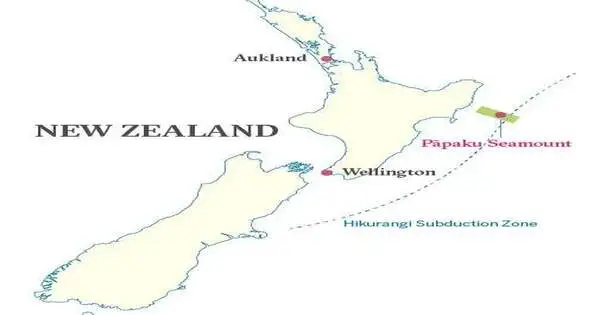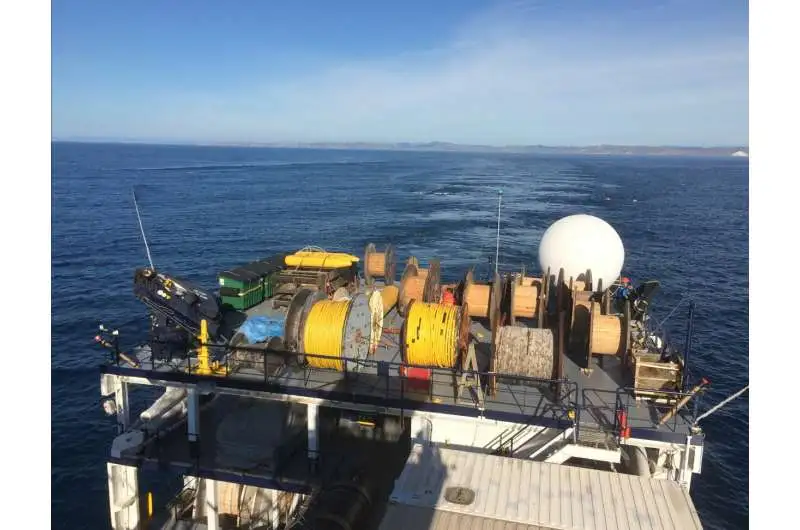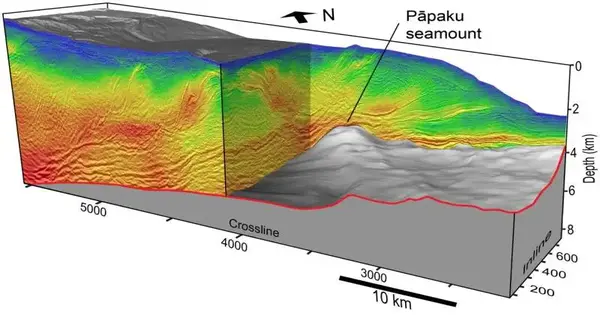What happens when seamounts—mountains and volcanoes on the seafloor—are pulled into subduction zones has long baffled scientists. Now, new research from The University of Texas at Austin demonstrates that when seamounts sink, a trail of soft sediments is left behind. Instead of violent tremors, the researchers believe that the sediment patches facilitate gradual tectonic pressure escape during slow slip earthquakes.
The findings, which were published on June 7, 2023, in the journal Nature Geoscience, can be used to modify earthquake models and assist researchers in figuring out the mechanisms that cause earthquakes.
Nathan Bangs, a senior researcher at the University of Texas Institute for Geophysics, was in charge of the study. Bangs was in charge of an ocean seismic survey in 2018 that led to the first-ever three-dimensional scan of a large subducting seamount. The long-extinct volcano, also known as the Ppaku Seamount, is located three miles below the seafloor in the Hikurangi subduction zone off the New Zealand coast.
The seamount’s collision with the subduction zone and its surrounding pattern of stresses, fluids, and sediments can be seen in the scan’s images. Sediments were pushed down the subduction zone ahead of the seamount, according to previous models, but the scan showed something else: a significant sediment trail in the wake of Ppaku.
The scientists were also taken aback when they discovered the fading trail of a much larger seamount that had long since subsided beneath the North Island of New Zealand.

On the Hikurangi subduction zone, east of the North Island of New Zealand, is the Ppaku Seamount. The first-ever 3D seismic survey of the seamount and its surroundings (the green-shaded area) was conducted in 2018 by researchers at the University of Texas Institute for Geophysics. Credit: University of Texas Institute for Geophysics.
Bangs said that the discovery from the University of Texas Institute for Geophysics suggests that sinking seamounts drag down enough water-rich sediment to make the crust in New Zealand suitable for slow-slip earthquakes.
Bangs stated, “That older one appears to be very strongly linked to an uplifted ridge that’s really in the bullseye of where recent slow slip activity has been.” There may be subducting seamounts and a lot of sediment in other places, like Cascadia in the Pacific Northwest of the United States. However, because the subducting crust there typically has less water than Hikurangi, they may not have the same kind of shallow, slow slip activity.”

A seismic survey of the Hikurangi subduction zone in New Zealand in 2018 An ultrasound scanner was towed behind Marcus Langseth, the research vessel, for the survey. The University of Texas Institute for Geophysics used seismic ultrasound data to create the first ever three-dimensional image of a large seamount colliding with a subduction zone. Credit: University of Texas Institute for Geophysics/Nathan Bangs.
Slow-slip earthquakes are slow-motion versions of large earthquakes. They release the same amount of stored tectonic energy in a harmless, creeping way over days or weeks. Scientists think that the composition of the crust plays a big role in how tectonic energy is released. Weaker, brittle rocks store energy until they fail in violent, deadly megaquakes, while softer, wetter rocks allow plates to slip slowly.
Scientists will now know what to look for in the world’s other subduction zones, according to the new findings, which also shed light on how those conditions occasionally manifest.
More information: Nathan L. Bangs et al, Slow slip along the Hikurangi margin linked to fluid-rich sediments trailing subducting seamounts, Nature Geoscience (2023). DOI: 10.1038/s41561-023-01186-3





